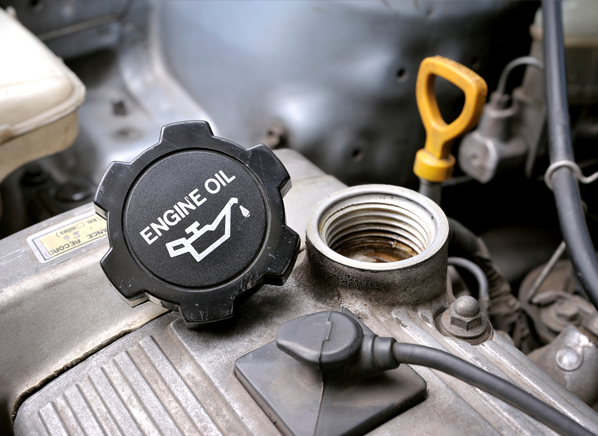
Checking your car’s oil level is the single most important thing you can do to extend the life of your car’s engine. In the time it takes to snap into a Slim-Jim, you can use a dipstick. Oil is the life blood of your car. Without it, you wouldn’t make it three miles. Oil keeps your engine clean inside, helps warm it up, and helps keep it cool. Most important, your oil keeps engine internals lubricated so metal never actually touches metal. Follow these quick steps and you’ll have one biggie checked off your car’s regular maintenance list.
Before you pop the hood for a routine oil check, be sure you park your car on level ground. You don’t want all the oil sloshing to the back while you’re checking the dipstick at the front. The dipstick is a long rod that goes deep into your engine to check the oil level. It’s usually easy to get to, and should have an orange or yellow handle. Most also say OIL on them (or OEL if your car speaks German).
Some cars with automatic transmission also have a dipstick for checking the transmission fluid, so take a minute to be sure you’re checking the right one. You can always consult your owner’s manual to be sure (recommended!). Also be sure to park someplace well lit. The pump area of large fueling stations usually have enough light to keep a stadium lit. You don’t want to spend 10 minutes stabbing your engine over and over with the dipstick because you can’t find the hole, trust me. If it’s possible to wait a few minutes for the oil to settle, do it. If you can’t it’s not a huge issue, you’ll still get a fairly accurate reading. With the hood safely propped, pull the dipstick out and wipe the end clean with a towel or rag. Re-insert the dipstick into the engine, making sure it goes all the way in. Now pull it out, but don’t turn it upside down to look at it, this makes the oil run upward and ruins your reading. The dipstick will have two marks at the bottom. They are usually either lines or holes in the stick. The oil level can be read by looking to see where the oily part ends and the dry part begins. If it’s between the two marks, you’re good to go. If it’s below the bottom mark, you need to add a litre of oil. Never add more than a litre at once without driving and taking a new reading of the oil level. Overfilling the engine can be messy.
Things To Remember
- Park on level ground.
- Be sure area is well lit.
- Don’t add more than a litre of oil at once.
That’s it! Five minutes of your time and you’re a hero to your happy car. Check your oil as often as you like. Once a month or so is good for a car in decent shape.
Source: Autorepairs
